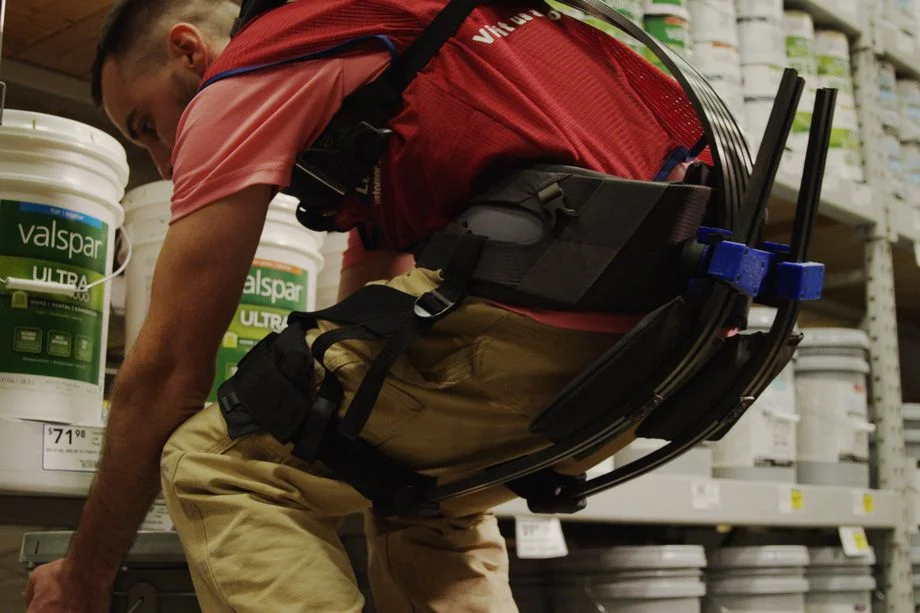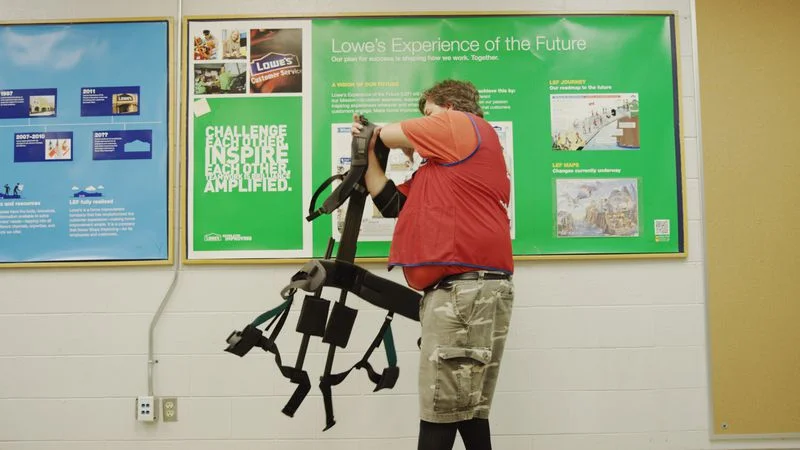Exoskeletons could help prevent on the job injuries.

On the job injuries and workers compensation can be costly to both employers and employees. Lowe’s has taken initiative to help promote work place safety with exoskeletons that assist employees while lifting throughout the day.
Lowe’s prototype exoskeletons give warehouse workers a boost
The non-motorized exoskeletons are currently being trialled in a store in Virginia

A Lowe’s employee wearing the company prototype exoskeleton.Photo: Lowe’s
Hardware chain Lowe’s is outfitting employees with a simple exoskeleton to help them on the job. The company has partnered with Virginia Tech to develop the technology, which makes lifting and moving heavy objects easier. The non-motorized exoskeletons are worn like a harness, with carbon fiber rods acting as artificial tendons — bending when the wearer squats, and springing back when they stand up.
“it feels like this heavy thing is much less heavy.”
“It feels very natural,” Kyle Nel, the director of Lowe’s Innovation Labs, tells The Verge. “When the person is walking and bends down to pick something up, the rods collect potential energy. And when they stand back up it puts that energy back into their legs and back. It’s very smooth, and it feels like this heavy thing [they’re lifting] is much less heavy.”
Lowe’s has issued four of the custom-built suits to employees at a store in Christiansburg, Virginia. The equipment has been in use for over a month and the company says early feedback is extremely positive. “[Employees] wear it all day, it’s very comfortable, and it makes their job easier,” says Nel, adding that Lowe’s is working with scientists from Virginia Tech to conduct a proper survey of the technology’s usefulness. “It’s early days, but we’re doing some major studies,” he says.

The exoskeleton is worn like a harness, and Lowe’s says it’s comfortable enough to have on all day.Photo: Lowe’s
Many companies and research institutes have developed simple exoskeletons of this type. Swiss firm Noonee sells a harness that lets wearers sit in midair, alleviating strain when squatting; and General Motors has teamed up with NASA to develop a motor-assisted glove that makes it easier to grip and lift heavy objects. More advanced exoskeletons like Panasonic’s powered suits are also available. However, as with this foray by Lowe’s, the actual number of exoskeletons deployed in the field is still small.
Lowe’s is confident that technology like this will help the chain stay efficient and productive. The company’s Innovation Labs has previously worked on projects like bespoke 3D printing (tested on the International Space Station) and creating a robot that guides customers around stores. This latest venture, though, seems more likely to yield results speedily, and Lowe’s says it kept the suit simple to make it easy to improve.
“We didn’t want to over-engineer it, make it too fancy, or give it too many bells and whistles,” says Nel of the exoskeleton. “We’re putting it in the rough and rumble world of a real store and will iterate on top of that.”






